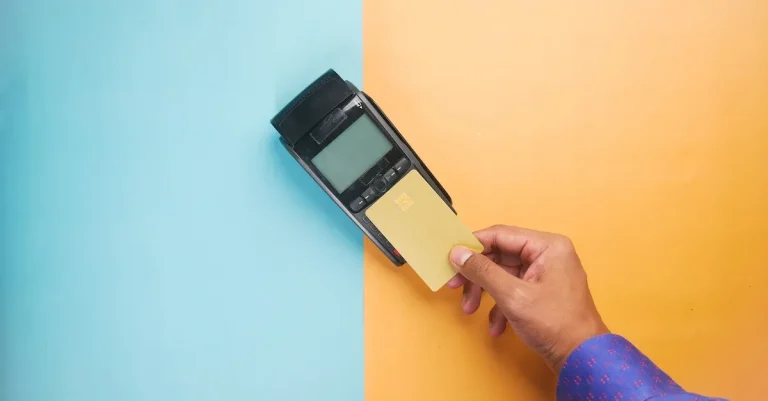EBT Account Aged Status Changed: What It Means and How to Reactivate Your Benefits
Seeing an “aged” status on your Supplemental Nutrition Assistance Program (SNAP) Electronic Benefits Transfer (EBT) account can be worrying. But what does it mean when your EBT account says it’s aged, and can you get your benefits back?
If you’re short on time, here’s a quick overview: An aged EBT account status means your account has been inactive for a certain period of time, usually 6-12 months. Your benefits will be removed, but you may be able to reactivate your account by contacting your local social services office.
This guide explains EBT aging statuses in detail, including how to prevent your account from being deactivated and restore your benefits if needed. Read on to learn more about inactive, dormant, and expunged EBT accounts.
EBT Account Aging: Overview
Electronic Benefit Transfer (EBT) is a system that allows individuals and families in need to receive government assistance benefits, such as Supplemental Nutrition Assistance Program (SNAP) benefits, through a debit card.
These benefits are crucial for many low-income households to meet their basic needs and put food on the table. However, EBT accounts can sometimes become aged, which can lead to temporary suspension of benefits.
It is important to understand what EBT account aging means and how to reactivate your benefits.
What does EBT account aging mean?
EBT account aging refers to the process in which an EBT account becomes inactive due to the account holder’s failure to use or access their benefits for a certain period of time. Each state has its own eligibility requirements and guidelines for EBT accounts, including rules on account activity.
If an account remains inactive for a specified period, it may be considered aged, resulting in a temporary suspension of benefits.
Why do EBT accounts age?
EBT accounts age for various reasons.
One common reason is when beneficiaries fail to use their EBT cards for an extended period. This can happen when individuals no longer require government assistance or when they are unaware of the need to regularly use their benefits to maintain an active account.
Additionally, changes in household income or circumstances can also lead to EBT account aging if beneficiaries do not update their information with the relevant authorities.
How to reactivate your benefits
If your EBT account has become aged and your benefits have been temporarily suspended, it is important to take action to reactivate your benefits.
The specific steps to reactivate your benefits may vary depending on your state’s regulations, but here are some general guidelines:
- Contact your state’s EBT customer service hotline or visit their website for information on how to reactivate your account.
- Provide any necessary documentation or updated information, such as proof of income or changes in household composition.
- Follow any instructions provided by the customer service representative or on the website to reactivate your account.
- Ensure that you use your EBT card regularly to maintain an active account and avoid future account aging.
Note: It is essential to stay informed about any changes or updates regarding your EBT benefits. Regularly checking your account status and keeping your information up to date can help prevent account aging and ensure uninterrupted access to your benefits.
For more information on EBT account aging and how to reactivate your benefits, you can visit the official website of your state’s EBT program or refer to authoritative sources such as the USDA’s Food and Nutrition Service website.
Inactive EBT Account Status
An inactive EBT account status refers to a temporary suspension of benefits on an Electronic Benefit Transfer (EBT) card. This can happen for various reasons, such as not using the card for an extended period or failing to comply with certain program requirements.
When an EBT account becomes inactive, it means that the cardholder is temporarily unable to access their benefits.
Notifications Sent
When an EBT account status changes to inactive, the cardholder will typically receive a notification from the relevant agency. This notification may be sent via mail, email, or through the agency’s online portal.
It is important to keep an eye out for these notifications as they will provide instructions on how to reactivate the account.
The notification may include information about the reason for the account’s inactivity, the steps required to reactivate it, and any deadlines or documentation that may be needed. It is crucial to read and follow these instructions carefully to ensure a smooth reactivation process.
How to Reactivate
Reactivating an inactive EBT account is usually a straightforward process. The exact steps may vary depending on the specific program and agency, but generally, the cardholder will need to take the following actions:
- Contact the agency: The first step is to get in touch with the agency responsible for administering the EBT program. This can typically be done by calling a designated helpline or visiting the agency’s website.
- Provide required information: The cardholder may be asked to provide certain information to verify their identity and eligibility for benefits. This may include personal details, such as name, address, and Social Security number.
- Submit documentation: In some cases, the agency may require the cardholder to submit additional documentation to support their reactivation request. This could include proof of income, residency, or other relevant documents.
- Follow any additional instructions: The agency may provide further instructions on additional steps or requirements to complete the reactivation process. It is important to follow these instructions diligently to ensure a successful reactivation.
Once the necessary steps have been completed, the agency will review the request and reactivate the EBT account if everything is in order. The exact timeframe for reactivation may vary depending on the agency’s processes, but it is advisable to contact them for an estimated timeline.
Remember, an inactive EBT account status is usually a temporary situation, and benefits can typically be reinstated by following the proper procedures. It is crucial to stay informed and take prompt action to reactivate your benefits and continue accessing the support you are entitled to.
Dormant and Expunged EBT Account Statuses
Dormant Account Status
When an EBT account is labeled as “dormant,” it means that the account has not been used for a certain period of time.
This can happen if the account holder has not made any transactions or accessed their benefits for an extended period. The specific timeframe varies depending on the state but typically ranges from 6 to 12 months of inactivity.
Having a dormant EBT account does not mean that your benefits have been canceled or expired. It simply means that the account is inactive and cannot be used until it is reactivated. While in a dormant status, you will not be able to make any purchases or access your benefits.
If you find that your EBT account has been labeled as dormant, don’t worry! Reactivating your account is a straightforward process that can be done by contacting your state’s EBT customer service or visiting their website.
Expunged Account Status
An expunged EBT account status indicates that your account has been permanently closed. This can happen for various reasons, such as fraud or misuse of benefits.
When an account is expunged, all remaining funds are typically forfeited, and you will no longer be eligible to receive benefits through that account.
If your EBT account has been expunged, it is important to reach out to your state’s EBT customer service immediately to understand the reason behind the closure and explore any possible options for reinstating your benefits.
Reactivating Dormant and Expunged Accounts
Reactivating a dormant EBT account involves contacting your state’s EBT customer service or visiting their website. They will guide you through the necessary steps to reactivate your account, which may include providing updated information or confirming your eligibility for benefits.
On the other hand, if your EBT account has been expunged, the process of reactivation may be more complex. You will need to communicate with your state’s EBT customer service to determine if there are any avenues for reinstating your benefits.
It is essential to be proactive and provide any requested documentation or information to support your case.
Remember, maintaining an active EBT account ensures that you can continue to access the benefits you are entitled to. If you have any questions or concerns about your EBT account status, it is always best to contact your state’s EBT customer service for guidance and assistance.
Avoiding Aged EBT Account Statuses
Having an aged status on your Electronic Benefit Transfer (EBT) account can be a cause for concern. It means that your benefits have not been used for an extended period of time, and there are steps you can take to reactivate your benefits.
Use Your EBT Card Regularly
One of the best ways to avoid an aged EBT account status is to use your EBT card regularly. Make sure to use it for eligible purchases at authorized retailers. By using your card on a consistent basis, you can ensure that your benefits are being utilized and prevent your account from becoming inactive.
Additionally, keeping track of your remaining balance is important. This way, you can plan your purchases accordingly and make sure to use your benefits before they expire.
Contact Your Caseworker About Absences
If you anticipate being unable to use your EBT card for an extended period of time, it’s important to communicate with your caseworker. Whether it’s due to a temporary absence or a change in circumstances, informing your caseworker can help prevent your benefits from being inactivated.
Your caseworker can provide guidance on how to maintain your benefits during your absence, such as submitting necessary documentation or arranging for an authorized representative to access your account on your behalf.
Update Contact Information
Keeping your contact information up to date is crucial to avoid any issues with your EBT account. If your contact information changes, such as your address or phone number, make sure to notify your caseworker as soon as possible.
This ensures that you receive important notifications about your benefits and any changes to your account status. It also allows your caseworker to reach out to you if there are any concerns or issues with your account.
Remember, maintaining an active EBT account is essential to continue receiving the benefits you are eligible for. By using your EBT card regularly, staying in touch with your caseworker, and keeping your contact information updated, you can avoid aged EBT account statuses and ensure the smooth operation of your benefits.
Appealing Aged EBT Account Closures
When you receive a notice that your EBT account has been closed due to age, it can be frustrating and confusing. However, there is a process in place for appealing these closures and potentially reactivating your benefits.
It’s important to understand what it means when your EBT account is labeled as “aged” and how you can take action to resolve the issue.
Understanding the “Aged” Status
When an account is labeled as aged, it is automatically closed, and the benefits associated with the account are no longer accessible.
Reasons for Aged EBT Account Closures
There are several reasons why an EBT account may become aged and subsequently closed. Some common reasons include:
- Failure to use the EBT card for a specified period of time
- Failure to report changes in income or household composition
- Inability to access the account due to technical issues
It’s important to note that EBT accounts should not be closed without proper notification and an opportunity for the recipient to appeal the closure.
Appealing an Aged EBT Account Closure
If your EBT account has been closed due to age, you have the right to appeal the closure.
The first step is to contact your local Department of Social Services or the agency responsible for administering the EBT program in your state. They will provide you with the necessary forms and information to start the appeals process.
When submitting your appeal, it’s crucial to provide any supporting documentation that demonstrates your eligibility for continued benefits. This may include proof of income, proof of household composition, or any other relevant information that supports your case.
The appeals process can vary depending on the state but generally involves a review of your case by a hearing officer or administrative law judge. They will consider the evidence presented and make a determination regarding the reactivation of your benefits.
Reactivate Your Benefits
If your appeal is successful and your benefits are reinstated, it’s important to take steps to reactivate your EBT account.
Contact your local office to find out what steps you need to take to reactivate your account and access your benefits again. This may involve obtaining a new EBT card or updating your account information.
Remember, if you’re facing an aged EBT account closure, don’t panic. Take the necessary steps to appeal the closure and provide any supporting documentation.
By understanding the process and advocating for yourself, you can increase your chances of having your benefits reinstated and continue to receive the assistance you need.
Conclusion
Having your EBT account closed due to aging can cut off an important source of food assistance.
But by understanding inactive statuses, reactivating your benefits promptly, and keeping your account active, you can avoid disruptions to your SNAP support.









